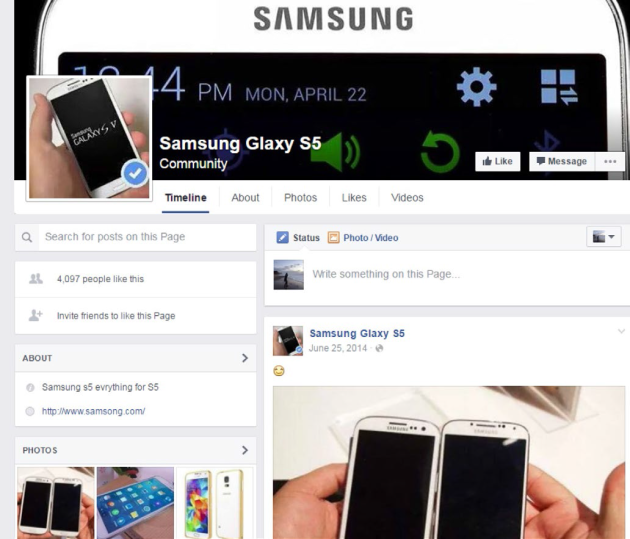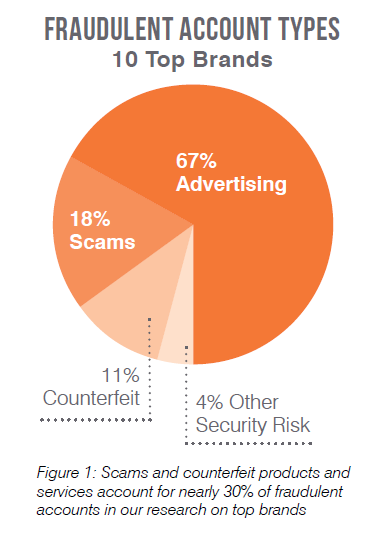
Brands are expected to spend $35.98 billion on social media advertising in 2017, but with big dollars, comes the threat of big fraud.
The rise of social platforms like Twitter, Facebook and Instagram has created the perfect swell for cyber-crime and fraudsters to create fake accounts to steal data and disrupt business.
From April to June 2016, global cyber security company Proofpoint researched the prevalence and types of fraudulent social media accounts on Instagram, Twitter, Facebook and YouTube.
The company analysed the audiences of socially active brands that appeared on the Brand Directory list of top brands for 2015, including BWM, Capital One, Chanel, Amazon, DirecTV, Nike, Samsung, Shell, Sony and Starbucks.
It determined 19% of the social media accounts associated with these brands were fraudulent. Of these fraudulent accounts, nearly 30% were scams or offers for counterfeit products and services.


Example of a fraudulent Samsung Galaxy account on Facebook. A fake verification badge appears on the left, while the authentic Samsung Galaxy account appears on the right.
Proofpoint VP of business development Ray Kruck is concerned by the increase in fake accounts, as 38% of companies plan to spend more than 20% of their total ad budgets on social media channels, according to eMarketer.
"Our new research details an ever-increasing amount of fraudulent accounts targeting brand pages, executive profiles and the communities that follow brands, with targeted scams and phishing attempts for confidential data,” Kruck says.
“We strongly recommend marketing and security teams take a proactive approach to building brand trust by identifying fraudulent social media accounts tied to their brand. This approach needs to include automated brand fraud detection, a process for reporting fake accounts to social networks and a detailed consumer response plan to ensure users are directed to legitimate brand pages.”
 The cyber crime business identified social phishing as the fastest growing social media threat, with an increase of 150% year-on-year. These accounts imitate your brand, product pages, or customer-support pages to bait followers into giving away confidential data.
The cyber crime business identified social phishing as the fastest growing social media threat, with an increase of 150% year-on-year. These accounts imitate your brand, product pages, or customer-support pages to bait followers into giving away confidential data.
Other crimes include impersonating executives, creating malware accounts, counterfeit products and services, pornography, brand satire and advertising fraud.
Advertising fraud accounted for more than two-thirds of 10 top brands fraudulent accounts. Below is a Sony PSP Games page that tries to use the Sony brand identity to trick followers into visiting junk websites.
 Sony PSP Games is an advertising fraud account on Facebook
Sony PSP Games is an advertising fraud account on Facebook
Only 4% of the 10 top brand fraud accounts exist for one or more of the following: phishing for personally identifiable information, malware, protest and satire. While 4% may seem a small percentage, these accounts can be dangerous to a brand’s reputation.
Proofpoint agrees there are tangible benefits to social media engagement, but brands need to focus more on security on the platforms to overcome the risk factors.
Have something to say on this? Share your views in the comments section below. Or if you have a news story or tip-off, drop us a line at adnews@yaffa.com.au
Sign up to the AdNews newsletter, like us on Facebook or follow us on Twitter for breaking stories and campaigns throughout the day.


